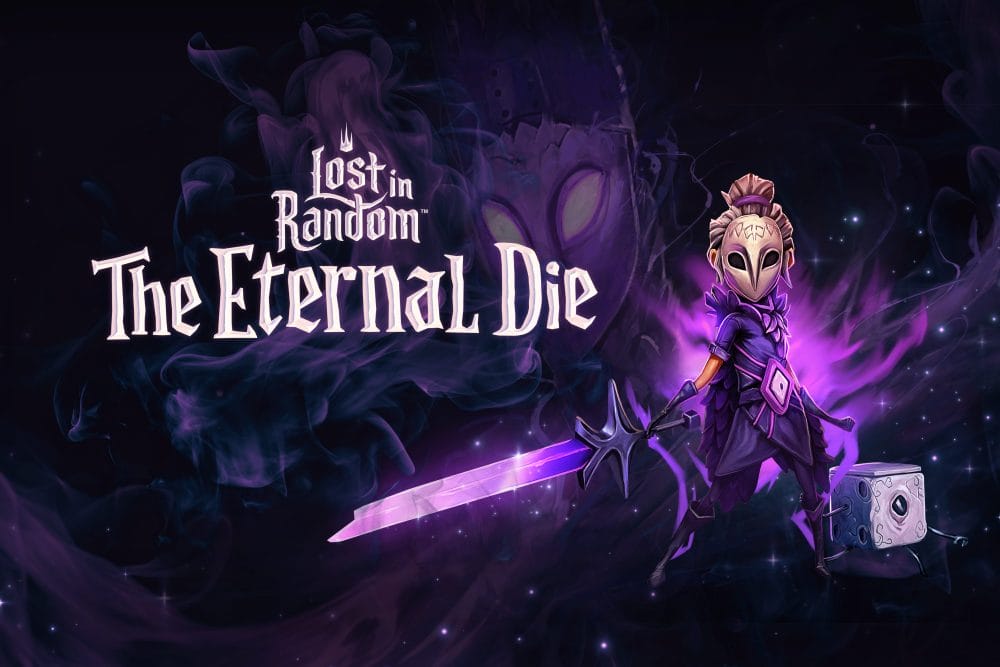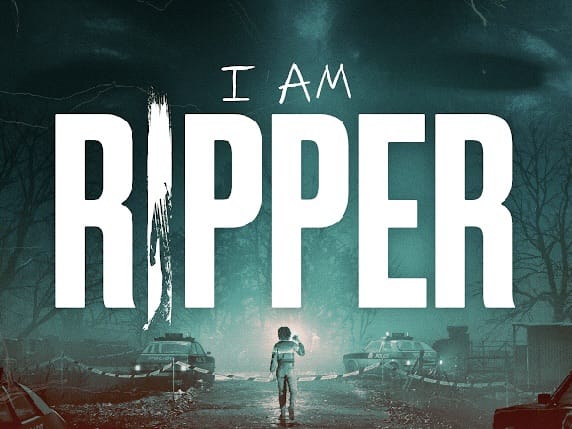A good sequel can do some amazing things. While they are often used to continue a narrative, flesh out a world, or explore certain themes or elements of an IP, a sequel has the potential not just to build on but improve the work that came before. As a big fan of the first Lost In Random game, developed by Zoink Games and released in 2021, I was excited to return to the beautiful, chaotic wonderland of Random. It was a roll of the dice; a different protagonist and type of gameplay, Lost In Random: The Eternal Die promises a wildly new experience from its predecessor. The gamble paid off, and while it may not go as far as bolstering what came before, Lost In Random: The Eternal Die is worth a roll of the dice.
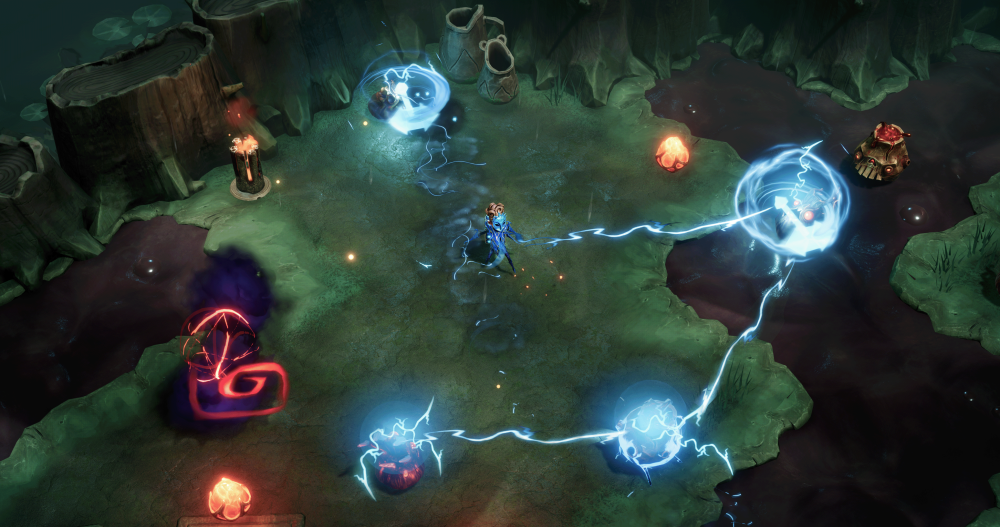
Premise
A direct follow-up to Lost In Random, The Eternal Die has the player take on the role of Queen Aleksandra, the antagonist from the first game, and her sentient die companion, Fortune. The duo are sucked into a pocket dimension within the Black Die (the Queen’s weapon from the first game) in an attempt to purge it of its evil nature. They come face to face with Mare the Knight, the entity controlling the Black Die and the orchestrator of the Queen’s past trauma and suffering. Now equipped with a target for her fury, and with the help of her six-sided friend, Queen Aleksandra vows to slay Mare and have her revenge.
After their first failed attempt to defeat Mare, the Queen and Fortune wind up in Sanctuary, a small settlement within the Black Die that exists outside of the nefarious Knight’s control. Here, our duo meets Chance, a statue-like figure who explains that death isn’t the end, and that they will return to Sanctuary upon ending a run, victorious or otherwise. This new ally also shares that they can only escape the Black Die if Mare is defeated. With Sanctuary as a place to rest, upgrade weapons, and unlock permanent blessings to help on the next run, the game is set.
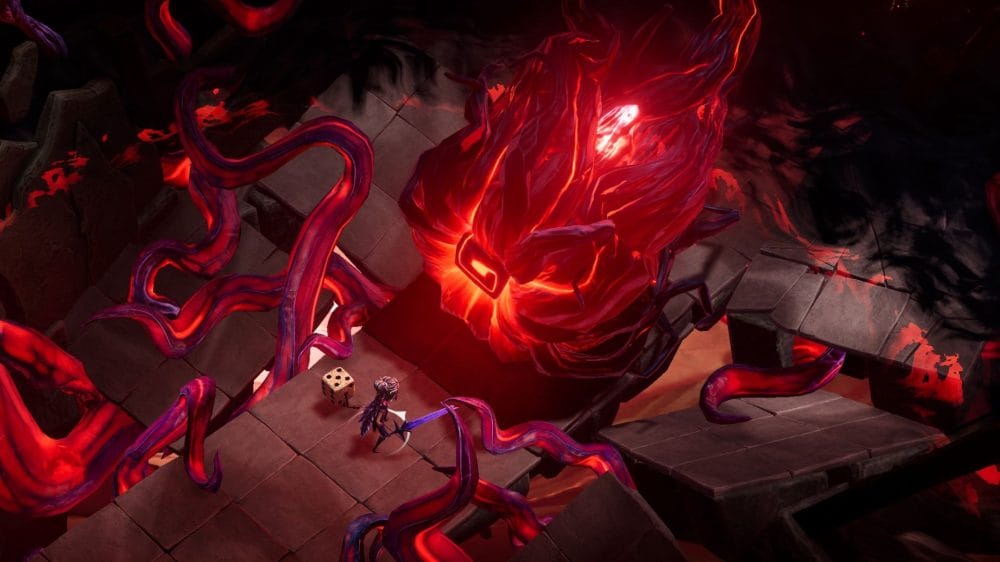
As opposed to weaving a narrative as you progress through the game, The Eternal Die explores Queen Aleksandra’s backstory and deepens the lore and history of the world of Random. Most of this is delivered through fully voiced conversations with a wacky cast of NPCs, who congregate in Sanctuary as our heroes find them during runs in the Black Die. I particularly enjoyed talking with the bulbous, floating Visionary, who would regale Aleksandra with stories of Random’s origins, much like a creation myth, when she returned each of his memories to him. Most conversations are meant to give the player greater insight into the Queen, presenting her with opportunities to reflect on her behaviour as a monarch, before being trapped in the Black Die. However, it never really seems to take shape, and I felt her temperament and worldview stayed the same from beginning to end.
While the game may not have anything bold to say with regards to its protagonist’s motives, nor do we see her go on an introspective journey, her quest for revenge serves the game’s design well, and every character is written and realised brilliantly. I still struggle to pick a favourite member of this kooky cast, from the canny shopkeeper Mannie Chex to the guffawing, gentle giant Rack. (I love his jokes!)
There is one particular detail, or lack thereof, that had my whole experience with The Eternal Die slightly cocked. There is little to no mention of the previous game, its events, or the main playable character, Even. It’s this omission that puts The Eternal Die in a strange position, where it is clearly a direct sequel that takes place in the same world, but seems almost completely disconnected, save for its setting and some of the cast. It feels as though the game exists in its own little pocket dimension, much like the one that Queen Aleksandra and Fortune find themselves trapped within. I do not know if this is due to the changes the studio and team may have gone through in the years between the two games, but it felt at odds to me. While I can see this serving a new audience who may not have picked up the first game, I was disappointed by the lack of continuity.

Gameplay
Lost In Random: The Eternal Die is an isometric action roguelite, composed of runs through procedurally generated levels which are separated by floors. Levels are comprised of rooms connected by corridors, allowing players to backtrack and continue exploring or revisit Mannie Chex’s shop. You must complete a room before progressing to the next, and are rewarded with buffs, healing, or currencies at the end of each room. There are a total of four floors to overcome in order to confront Mare the Knight, and with no option to skip floors you have previously beaten, you must complete a full run and defeat Mare to earn your freedom. (You can fast travel between important rooms on each floor, but not between floors.)
Combat is fast and flashy without becoming a visual mess, with controls that felt responsive and well-tuned. Along with wielding one of four weapons, the Queen can throw her die companion in combat as a ranged AOE (area of effect) attack. The damage dealt by Fortune is dependent on what face he landed on, and must be picked back up to be thrown again. This single mechanic is my favorite part of The Eternal Die, not only because of how well implemented it is, with easy and clear inputs, but also because it is reminiscent of the prequel’s unique combat system. Aleksandra can also carry one Card, each with its own special attack that use up a certain amount of Energy which is accrued from defeating enemies and smashing pots.
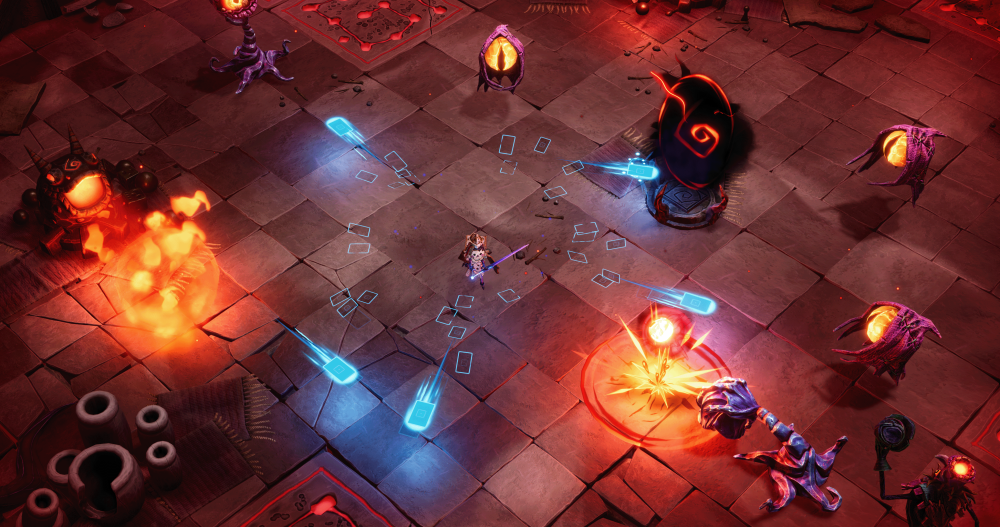
Like any good roguelite, The Eternal Die has its mixture of temporary upgrades, which you build up during a run and then lose when it is over, and permanent upgrades to strengthen you on your next run. Permanent upgrades come in two ways: upgrading Aleksandra’s weapons and Aama’s Blessings. Weapons are upgraded by talking to the dilapidated and delightful pawn, Rack, with each weapon having four different sets of buffs, which you can equip one of for your runs in the Black Die. There are three buffs to each set, and they follow a theme, like better healing or applying certain status effects, with some buffs having several levels. Cinder is the currency used to unlock and upgrade your weapons, and is earned as a reward for completing a room.
Blessings are unlocked by speaking to the mysterious Aama, a large frog-like being who has a history with Aleksandra. While the Queen may be the reason this witch is trapped in the Black Die, she recognises the young monarch is her best chance of escape, and offers her services. Each of Aama’s blessings comes in two forms, offering two versions of a similar buff. This could be a short attack boost after a dash, or an increased chance to negate oncoming damage, the choice is yours. Some blessings can directly affect the way you play, like the option to call back Fortune after throwing him, and many of them can be upgraded as well. Pips are the currency used to unlock and upgrade blessings and are another reward for completing rooms during a run. The combination of blessings and weapons offers a decent variety of playstyles, giving the player the ability to refine how they want to play as they improve, run after run.
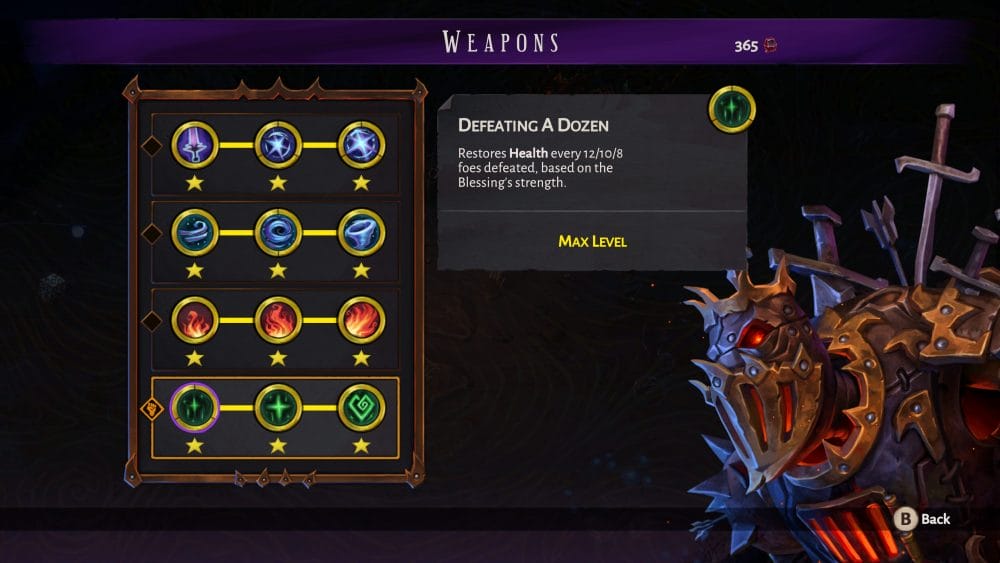
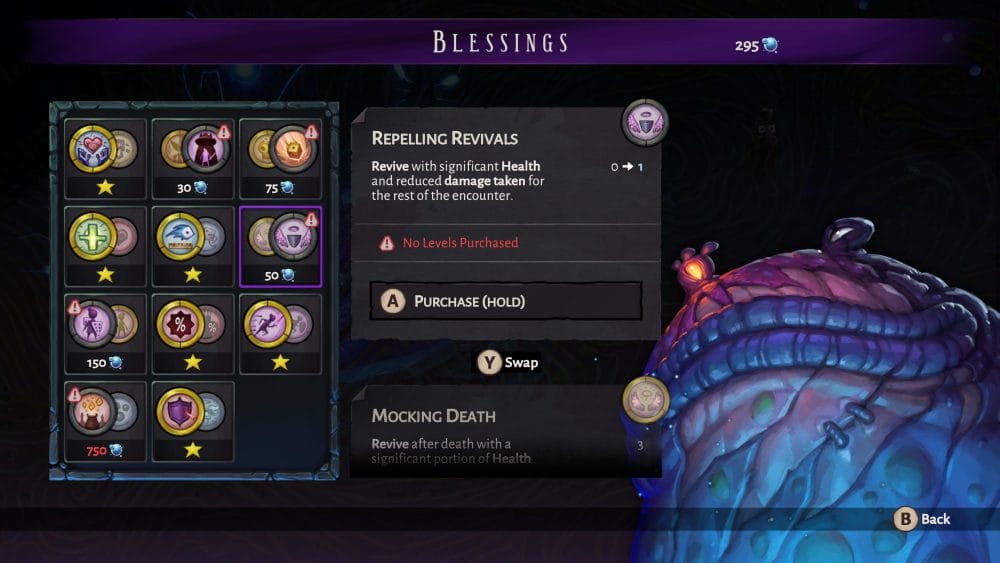
On the temporary, mid-run side of progression, The Eternal Die has a fun, boardgame-like system that offers more depth than its design belies. During your runs, you will pick up relics that grant magical effects and passives to help you on your quest. These relics are equipped on a grid board in the shape of a diamond, with only the centre square available to start. Once the first relic is slotted in the centre square, the neighboring squares become usable. There are dozens of different relics to equip, with a plethora of effects that can be applied to either Aleksandra or Fortune, and can really change up how you play on a particular run.
The other items you find that can be placed on this upgrade grid are pearls, which are used to fill an unused space but provide no effects. These pearls are used for the second function of the board, which is to line up three or more relics and pearls of matching colour to gain a boost to the linked stat. Each relic or pearl can have one or more colours, so thinking about what effects and stat boosts you want and looking ahead can be crucial to a successful run. It took me a few runs to get to grips with this system, but once I understood how to gain stat boosts and pay attention to which relics did what, I was able to start planning and adjusting mid-run. I can imagine players developing some pretty devastating builds if luck is in their favour.
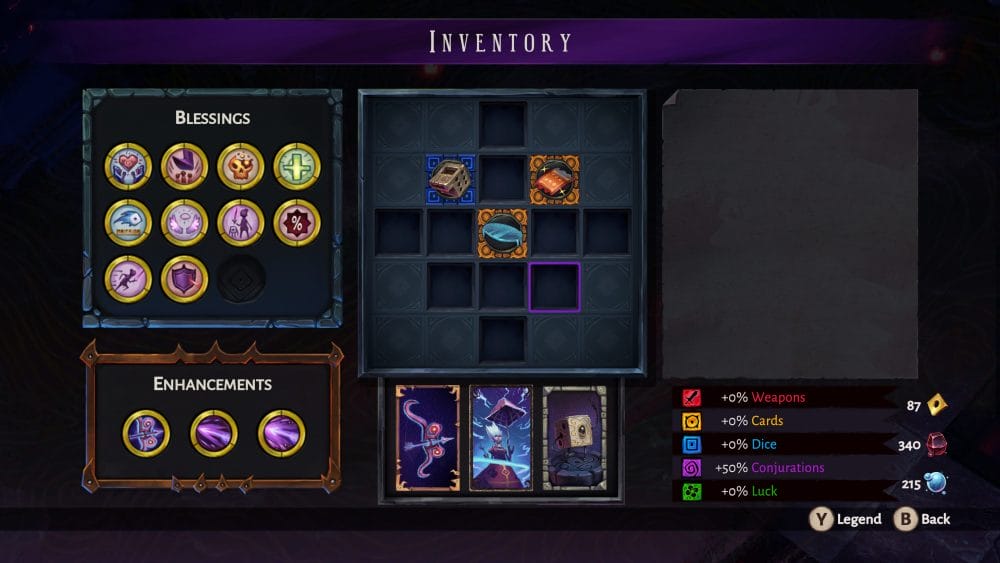
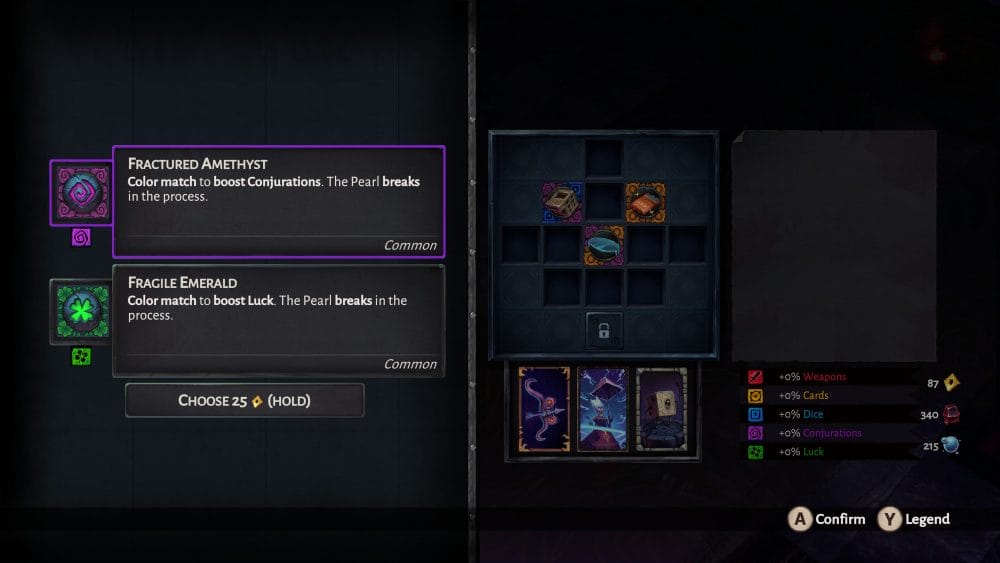
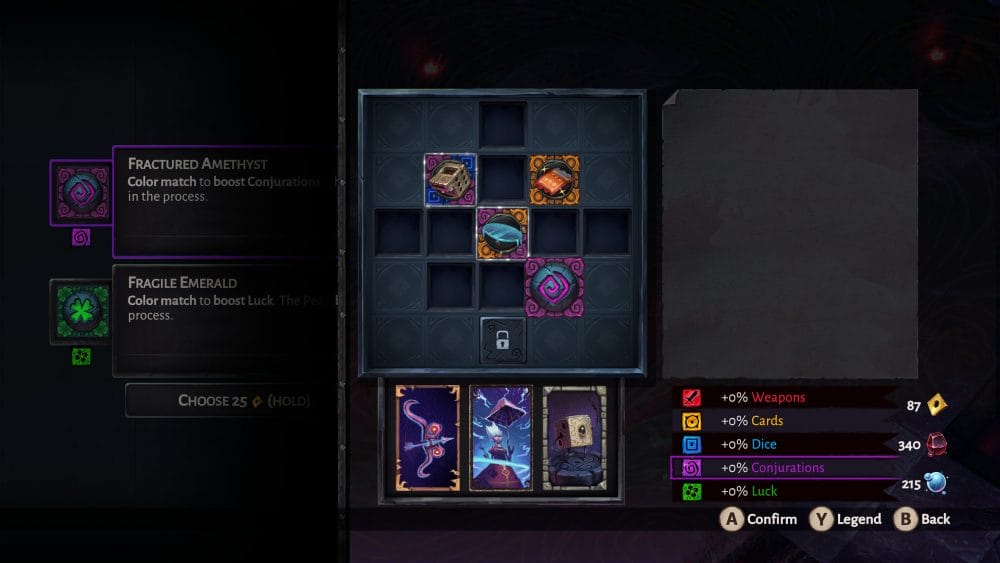
Enemy variety is solid, with a different range of foes associated with each floor. Each room involving combat has two waves of enemies, often pairing up close combat and ranged enemies for a greater challenge. All enemies have different movesets, and learning how each one behaves will help you approach each encounter with a fight plan. There are a total of five bosses in The Eternal Die, each one with several stages. It took me 2-3 attempts to defeat each boss, with about half a dozen failures before I finally defeated Mare. The bosses hit hard and have a decent pool of moves to keep you on your toes, but I never felt overwhelmed, just under pressure. As someone who has only gotten into roguelikes and roguelites in the last couple of years, I feel The Eternal Die has a good balance of difficulty, and I was able to finish the game’s main story in just over 15 hours.
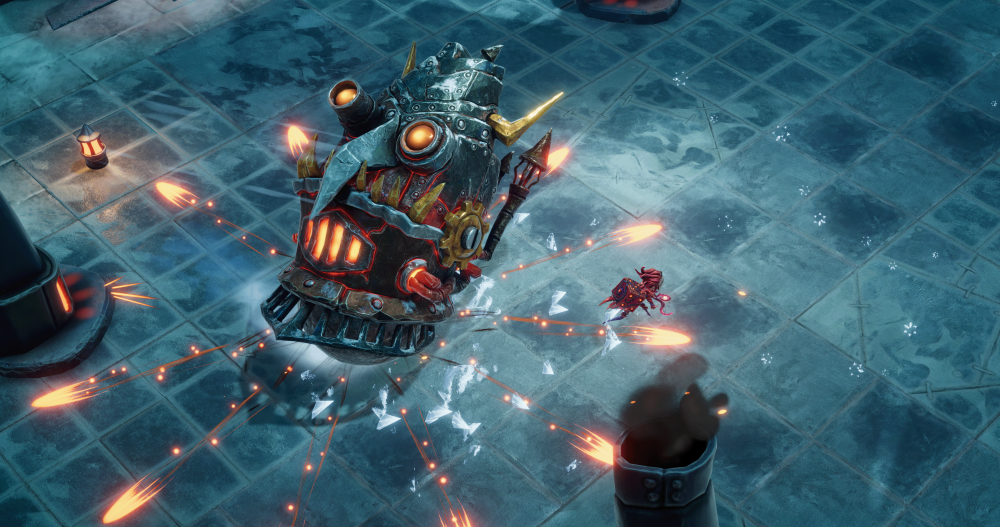
On each floor, there are other rooms that offer chances to bolster yourself mid-run, like Mannie Chex’s shop, where you can buy pearls, relics, add a colour to a relic or a pearl you already have, or heal. You can also come across Wager Rollins, who offers several games of chance to earn rewards. Other NPCs you meet on your quest will return to Sanctuary, with some offering their services like outfit customisation for Aleksandra and Fortune. Many characters have side quests attached to them, and completing them all unlocks a different ending when finishing the game, but none were too taxing.
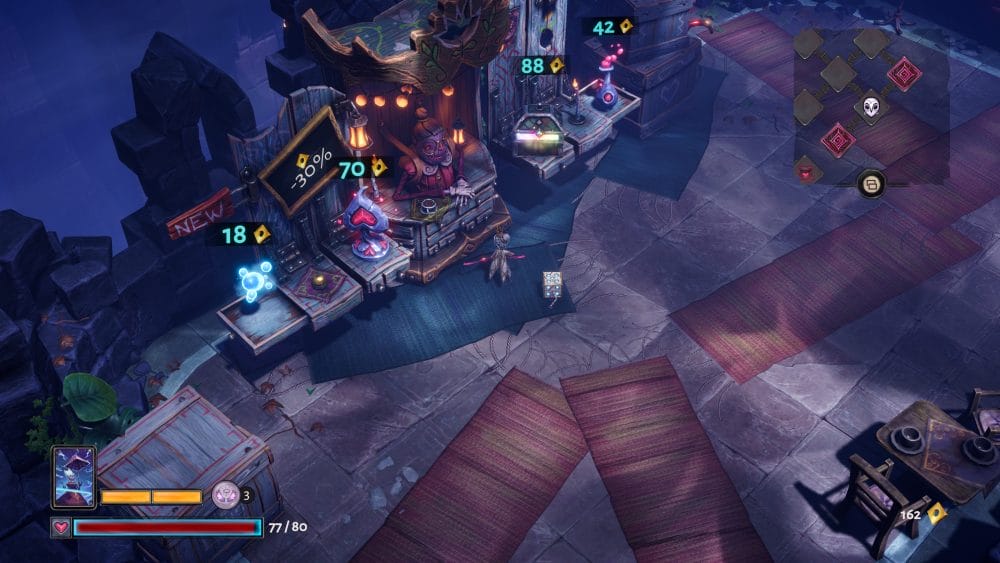
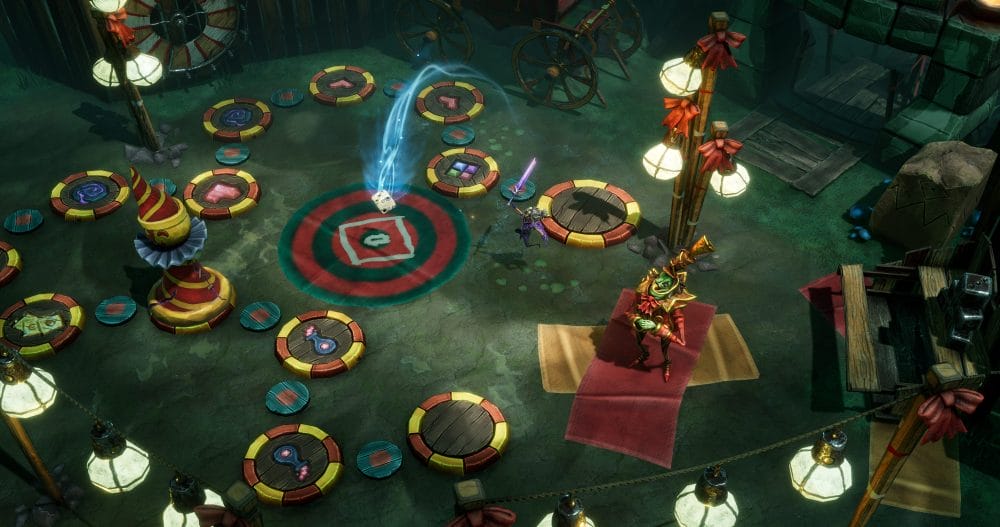
Visuals
The Eternal Die does away with the stop motion animation of its predecessor, choosing a smoother style, which certainly lends itself to the frenzied flow of combat. I think it is a shame that we have lost some of that handcrafted feel that the first game had, but I can’t deny that The Eternal Die looks gorgeous. All the environments are packed with details, from moss-covered flagstone paths through swampland to Sanctuary’s cluttered existence, a trash heap of random stuff from Random, complete with a large “DISCARD” sign upon returning.
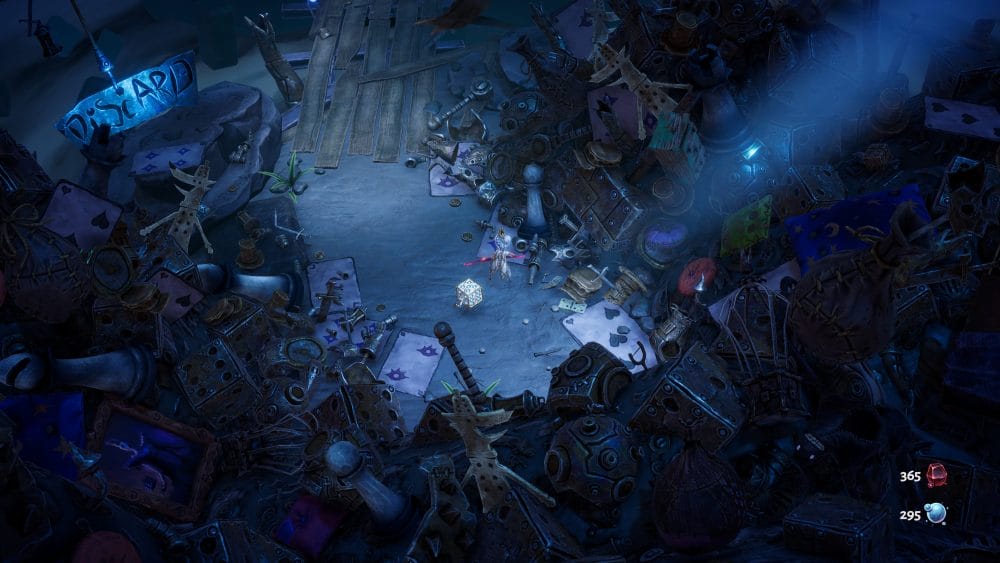
The world is even more colourful than before, with each floor within the Black Die a recreation of somewhere in Random important to Aleksandra, suspended in a vibrant vortex. I have to highlight the clever design of having Mare tormenting the Queen with her own memories; an excellent narrative explanation for differently designed floors, giving the art team that flexibility.
Characters, enemies, and bosses all have fantastic and evocative character design, which adds to the imaginative nature of Random. All of the NPCs that the Queen meets on her quest all have such unique designs that they would be distinguishable by silhouette alone. My personal favorite is the enigmatic Dots, who is either one or many dice, parading as one; it’s hard to tell. The game’s animations are expressive and easy to read, with moves telegraphed well and some very satisfying particle effects accompanying attacks. The bosses, in particular, not only look amazing but move with weight that matches their size, and adds to their imposing appearance.
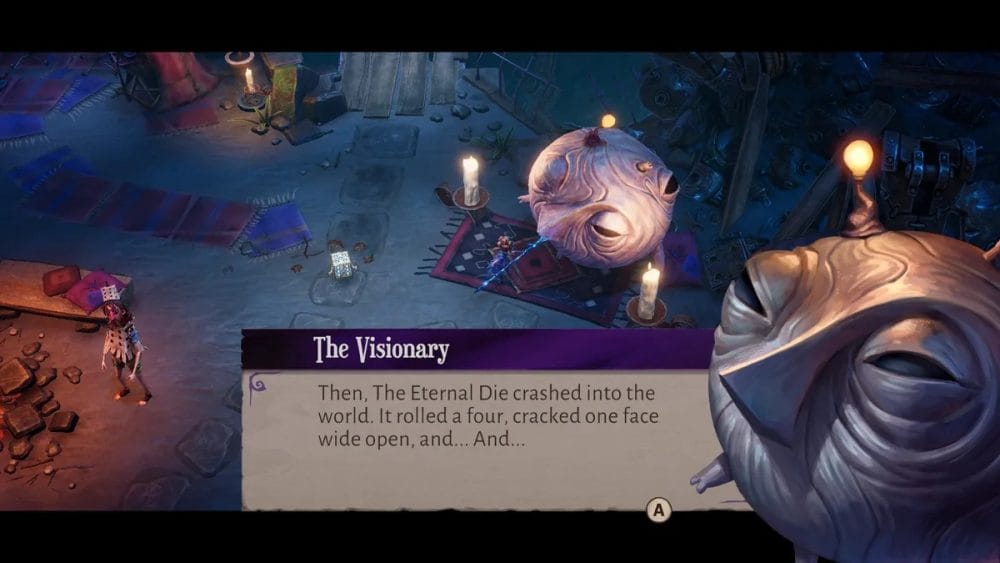
Audio
The soundtrack and sound design of The Eternal Die are great, capturing the ambiance within the Black Die and communicating the chaotic nature of combat, respectively. There are excellent ambient tracks between battles that match the eclectic nature of Random, with bombastic fight tracks that get your blood pumping.
But where the game really shines is in the vocal performances of its colourful cast. Every character is perfectly encapsulated by their voice, from their pitch to their tone, like actors in a play. They are exuberant and full of life, with just a hint of weird, from the loud gamemaster Wager Rollins to the snobbish double act of the Duke and Duchess of Doublet. Even Fortune’s squeaky jibberish was charming, despite not knowing what he was saying. I cannot overstate how much I enjoyed every character’s performance, something that has remained from this first game.
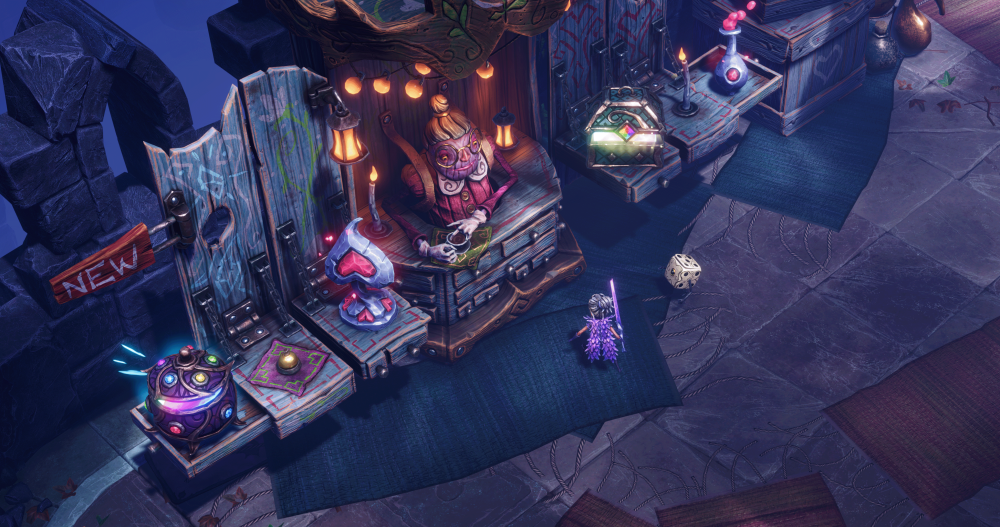
Conclusion
I do think that something was lost in The Eternal Die’s shift in visual presentation and narrative structure, which may serve the gameplay better, but feels less impactful than the first game did.
While I may have been let down by the isolated nature of Lost In Random: The Eternal Die’s design, with its single-note narrative and detachment from its predecessor, I was happy to be back in the wonderfully weird world of Random, with its charming cast and bizarre rules. I thoroughly enjoyed its fun, easy-to-pick-up combat, progression systems that offer variety and strategy, challenging boss fights, and delighted in the superb voice acting and singular art direction. I may not be a gambling man, but if you like a good roguelite, Lost In Random: The Eternal Die is a sure bet for a great time.
RANDOM RULES!

Lost In Random: The Eternal Die is available on PC(Steam), Xbox, PlayStation, and Nintendo Switch.
The game was reviewed on Xbox Series X via Game Pass.

